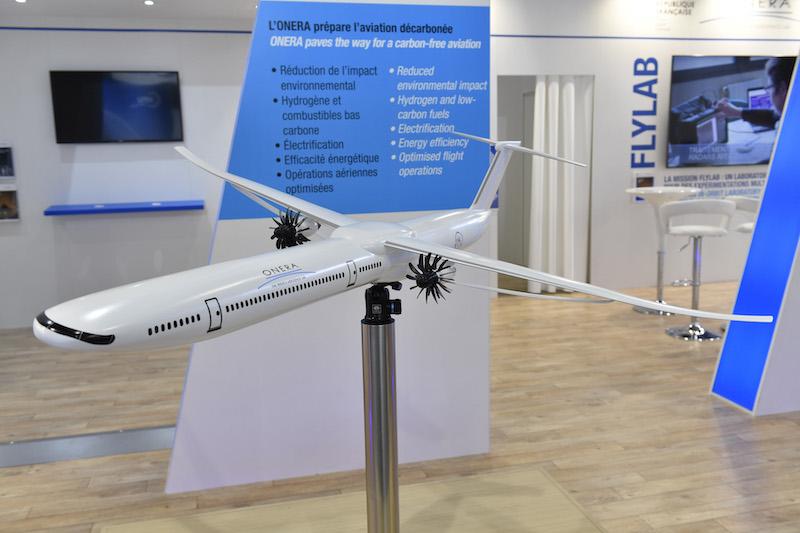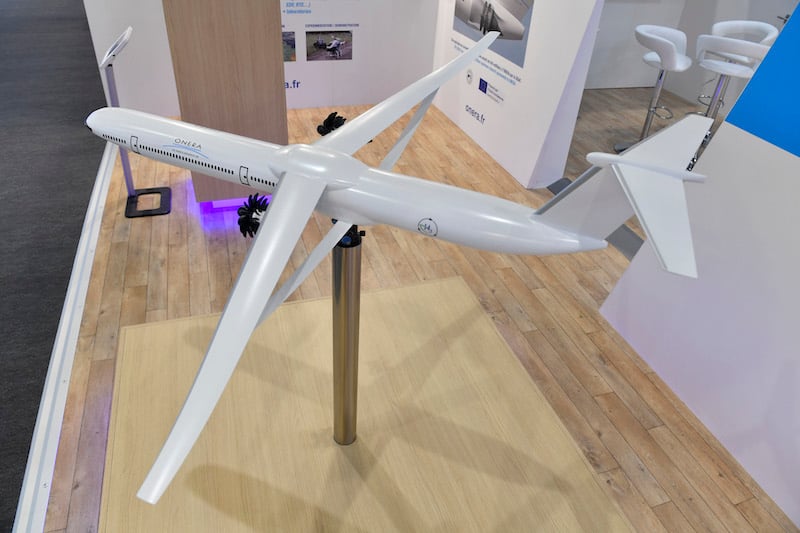
A model of the Gullhyver concept on display at Paris Air Show.
LE BOURGET—French aerospace research agency Onera has unveiled a concept for a hydrogen-fueled commercial aircraft with a truss-braced wing and open rotor engines.
The Gullhyver concept for a 200-seat, 4,000-nm-range airliner is being studied under Europe’s Clean Aviation public-private research program.
The Gullhyver adapts the double-bubble lifting fuselage previously studied by Onera for its Nova concept. Inspired by the D8 design developed for NASA by the Massachusetts Institute of Technology, the Nova was a concept for a 180-seat, 3,000-nm airliner with engines embedded in the real fuselage.
The double-bubble cross-section with upward sloped nose was used on the Nova to enable the fuselage to generate lift. The research agency has a different motivation for using the configuration on the Gullhyver, says Sebastien Defoort, a research engineer in overall aircraft design at Onera.

Going to a non-circular fuselage cross-section with eight-abreast seating provides more room in the wider aft fuselage for the liquid hydrogen tanks, he says. All of the passenger cabin is forward of the wing and the fuselage would be too long if the aircraft had a conventional single-aisle cross-section.
Similar in concept to Boeing's Transonic Truss-Braced Wing, the Gullhyver’s ultra-high-aspect-ratio wing is being studied in Europe under the U-Harward program, an EU-funded project within Clean Aviation. The 42-month research project was launched in May 2020 and will be completed in October.
On the Gullhyver, the wing has an aspect ratio of close to 20, says Defoort, compared to 9-11 for existing short and medium-range airliners. This reduces drag. The truss braces the modestly swept wing and reduces weight. The struts carry loads only and do not generate lift, he says.
The third unusual feature of the Gullhyver is the open-rotor engines, which are based on the design under development by GE Aerospace and Safran within CFM International’s RISE (Revolutionary Innovation for Sustainable Engines) technology development program.





